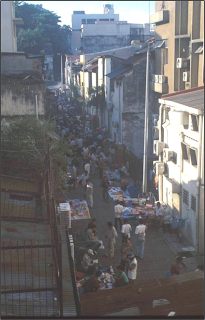a. Agora and the Wang Cheng 王城
b. The Imperial way and qianbulang 千步廊
c. Market place
d. Residential neighborhood
e. shi-jing 市井 and street life
f. Activity node: Pier, bridge, gate, theatre, intersection, building foreground
g. Tian’an Men Square and the city square after 1949
  |
| Sienna and Nara |
  |
| Vitruviu’s ideal city The Wangcheng Diagram |
 |
| Plan of Sui Daxing-Tang Chang’an 隋唐長安平面圖 |
 |
| T-shaped Qianbulang space in the Chinese Imperial Cities |
 |
| Market spaces in the Chinese Imperial Cities |
 |
| Tang Chang’an East Market 長安城東市 |
 |
| Housings of Eastern Han shown on a image brick |
 |
| Lay-out of the residential block in Wangcheng |
 |
| Song dynasty diagram of Bianliang and map of Suzhou city |
| Qing Ming Shang He Tu 清明上河圖 |
 |
| Tian’an Men Square in Qing Dynasty |
 |
| 1954 proposal for the Tian’an Men Square |
 |
| 1958 proposal for Tian’an Men Square |
 |
| St. Petersburge, Palace Square |
 |
| Nuremberg (Germany), a model of the buildings and parade grounds designed for the Nazi Party rallies by Albert Speer, 1937 |
  |
  |
  |
 |
| Tian’an Men Square 天安门广场 |
 |
| City Square in Nanning |
  |
| New District of Zhanjiang Chengguan District of Guangzhou |
 |
| Square in Hangzhou |
 |
| Square in Ruicheng, Shanxi |
 |
| Tianfu Square in Chengdu, Sichuan |
 |
| Xinghai Square in Dalian, Liaoning |
 |
| Wusi Square in Qingdao, Shandong |
 |
| RenminSquare in Shanghai |
   |
| Citizen Center Square in Shenzhen |
 |
| Sienna |
2. What are Public Spaces Other Than Plaza?
a. Public elements as didactic narratives: gate 城門, pavilion 亭, drum & bell tower 鐘鼓樓, Gateway 牌坊
b. Entrance, Rendezvous, Activity node: Pier, bridge, gate, intersection, building foreground
c. Temple and association 會館, Tea-house, Restaurant, Theatre, Inn Shi-jing 市井 and Market
d. Street life and the Great Street
f. Shop, Shop-house, Arcade and Shopping mall
 |
| Memorial Archway in Tangyue 棠樾牌坊 |
 |
| Cangpo Village 蒼坡村 |
 |
| Open space for interchange and transportation |
  |
| Penghu 澎湖 |
 |
| Layout of Siyan Well 四眼井平面草圖 |
講美村護榕褆活動觀察記錄
  |
| Piers in Qing Ming Shang He Tu |
  |
| Bridge in Qing Ming Shang He Tu |
  |
| Foreground for Yamen in Gu Su Fan Hua Tu |
 |
| The relationship between temple and settlement: Xinzhuang & Mengjia 新莊 & 艋舺 |
 |
| Temple & Plaza: The Tainan City 臺南府城 |
  |
| Plaza & Temple: Guang’an Gong in Tainan Plaza & Temple: Kaiji Yuhuang Gong in Tainan |
 |
| Temples at the street corners |
 |
| Nanjing Road |
 |
| Fuli Village, Guangxi 福利村,廣西 |
 |
| Fuli Village, Guangxi 福利村,廣西 |
 |
| Yangshuo, Guangxi 阳朔,廣西 |
 |
| Market Square in Dunhuang, Gansu |
  |
| Guangzhou 廣州 Kuala Lumpur 吉隆坡 |
 |
| Ping Dong Liu House 屏東劉宅街屋 |
 |
| Malacca 马六甲 |
  |
| George Town 槟城 |
 |
| Jinmen 金門 |
  |
| Taipei Shiding 台北石碇 Toucheng, Yilan宜蘭頭城 |
 |
| Xiamen 廈門 |
 |
| The Mall,Guangzhou |
 |
| Meilong zhen Plaze, Shanghai |
3. Urban Block and Urban Fabric
 |
| Block Sizes of Traditional Cities and Modern Cities |
 |
| Plan of Tang Changan 唐長安:里坊 |
 |
| Plan of Beijing from the 17th century through the 19th century |
 |
| Xidabo Street 西打磨街 現狀(上) 乾隆年間(下)比較 |
 |
b. Large block in East Asia and the alternative zoning: from Heian-kyo to Tokyo to Taipei
  |
| Plan of Heijo-Kyo Plan of Heian-kyo |
  |
| Kyoto |
 |
| Kyoto |
 |
| Early Tokyo Street |
 |
| Tokyo |
 |
| Tokyo - A sketch of an area in Koto and Sumida |
 |
| Tokyo |
 |
| Osaka |
  |
| Taipei |
 |
| Taipei |
 |
| Seoul |
c. The Modern Block and Transformation of Urban Fabric i
  |
| New York City |
  |
| San Francisco |
 |
| Singapore |
 |
| Kowloon |
 |
| Hong Kong |
 |
| Sheung Wan, Hong Kong |
 |
| Urban design along Chengdu Freeway, Shanghai |
 |
| Shanghai |
 |
| Guangzhou |
 |
| Guangzhou |
 |
| Beijing |

















没有评论:
发表评论